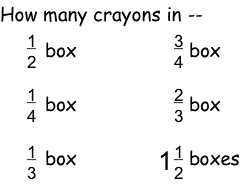 |
|
||||||||
|
Keynote Part IIAn Example of Using Video to Learn Mathematics for Teaching What I'm going to try to do next is take one example of what it might look like to organize professional development around practice. In this case, I'm going to use a video clip. However, I don't want to give the impression that I am arguing that learning in and from practice requires the use of video cases. I'm not saying that at all. I'm only proposing video as one way of capturing practice and making it available for use in professional development. As I mentioned above, another way to ground professional education in practice is to read and discuss cases; another way to do it is to engage in lesson study - and an increasing number of lesson study groups are emerging in this country; another way is to work with study groups of teachers in schools. The overarching idea here is to organize professional development much closer to the work of teaching. My use of a video clip here is one example of how one might do that. The challenge is this: By now, many of us are familiar with the idea of using video in professional teacher education, however, we don't always think of using video to create opportunities for learning content. Rather, it is more common to use video to discuss children's thinking, or to examine the teacher's moves, or to talk about teaching practice. What we will do here is explore what it might look like to design opportunities for teachers to learn mathematics from a piece of video. This is the list I showed you earlier with examples of mathematical problems teachers face in their work:
The ones we focused on earlier are shown in red: Analyzing errors, choosing and using definitions, and appraising claims. Now we're going to switch to and work on the four highlighted here (in green) as we examine a kind of activity that might be used in professional education. The example we are going to explore involves using records of practice - in this case, a video.
I am going to begin by framing the video clip for you. Then, after watching the video, we will look at some different examples of work that could be asked of teachers in a teacher education course or in a professional development setting that focus on mathematics learning. You might try to attend to the mathematical issues that arise for you as you watch the clip -the tasks I'll show you will be related to mathematical issues embedded in the video. This video comes from early May in a third grade class. It's ten days into the fractions unit and this is a curriculum where fractions are introduced for the first time in third grade, so this is relatively early in students' work on fractions. It's a classroom that's diverse, with many English language learners. The last page of the transcript gives you a bit of a portrait of who was in class on this day, their relative levels of English acquisition, their race, and so on. This will give a sense of the diversity of the classroom. It's also useful to say that this is a classroom in which the following norms were central components of the teaching and learning efforts across the entire school year: taking mathematics seriously; attending to other students' ideas with care; and working together on mathematics.7
In the previous class session, students were working on this problem: Here's a box of twenty-four crayons; how many crayons would be in half a box, a quarter of the box, a third of the box, two-thirds of the box, three quarters of a box, or one and half boxes?
It's important for you to know, as you watch this clip, that the students had been able to correctly answer, discuss, and justify their answers to one half, one fourth, one third, and three fourths of a box. The class ended before the students had a chance to discuss two thirds and one and a half boxes but they seemed to have no real difficulties with the problems they did discuss - including the last problem, three fourths of twenty-four. The problem they were asked to solve on the day we're going to watch is, "How many in three quarters of a dozen?" - one dozen, not twenty-four, crayons. I'd like you to attend to the mathematical issues you notice as you watch the video.
After watching the video, I'll frame a set of tasks that might be used with this clip to work on learning mathematics for teaching. We'll use this to consider one way in which teachers' opportunities to learn content can be structured in and around practice, and to spur the discussion of other ways to design for such learning opportunities. [Please watch the video clip now.] What are some of the mathematical issues you see in the video? 7 This videotape is taken from a collection of records that spans the entire school year for this third grade class. With support from the National Science Foundation, lessons were videotaped daily from September through June, students' written work and drawings copied and saved, and teachers' plans and notes, the mathematics problems on which students worked, and many other elements of the class were carefully documented in order to study teaching and learning, and to explore ways in which such records might be used in teacher education and professional development. |
||||||||||||||||||||||||||||||||
| © TERC 2003, all rights reserved | Home • Keynote • Poster Hall • Panels • Discussants Reflect • Resources • Lounge • Info Center |
